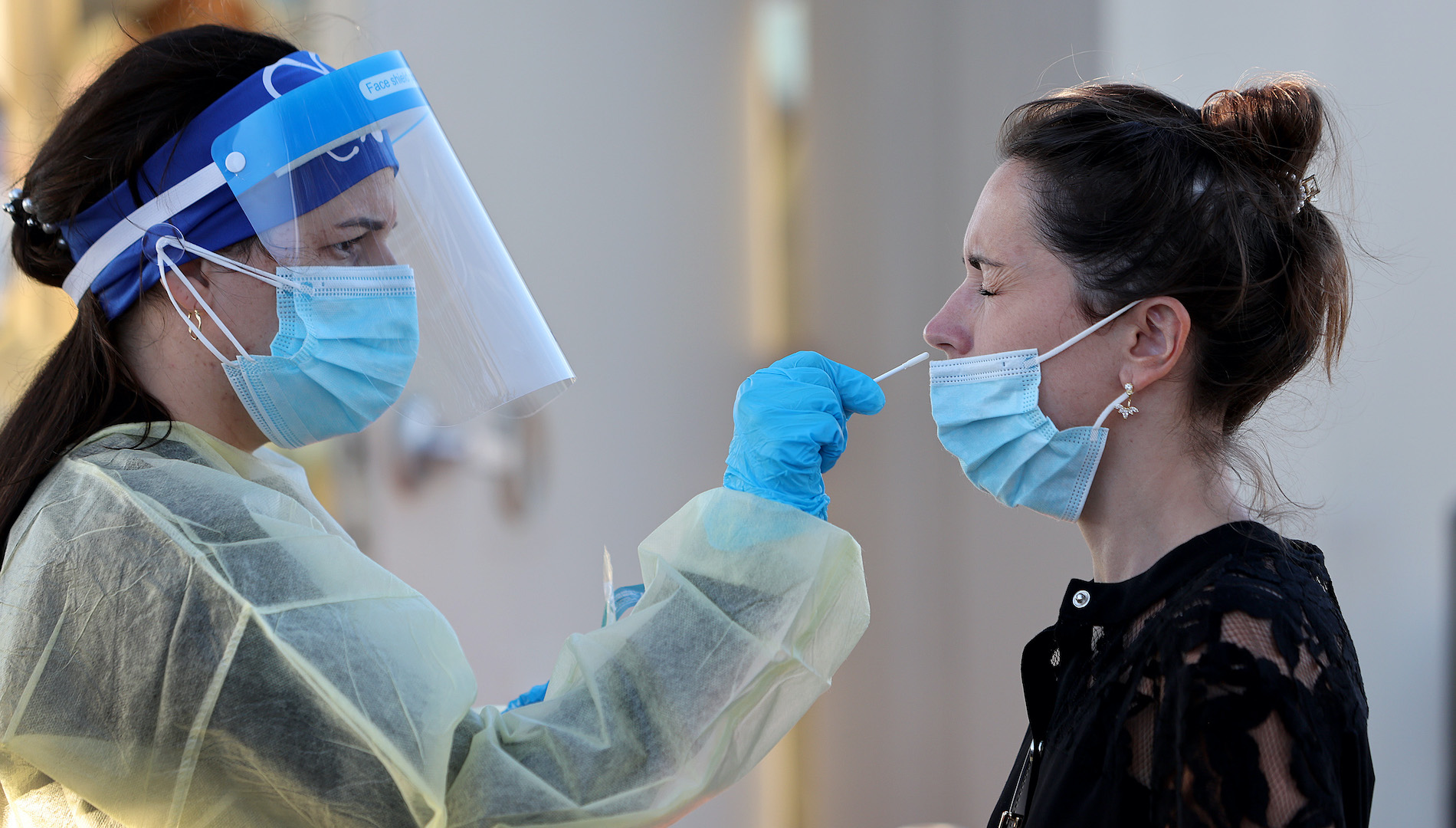New wave of covid-19 in the US with subvariant BA.5 2:05
(CNN Spanish) --
The BA.5 omicron subvariant is generating a new wave of infections, not only in the United States but in other countries worldwide.
According to a study, the subvariant is not only more contagious but the symptoms of covid-19 are usually more severe.
Dr. Elmer Huerta summarizes what we should know about this new subvariant.
You can listen to this episode on Spotify or your favorite podcast platform, or read the transcript below.
Hi, I'm Dr. Elmer Huerta and this is your dose of information about the new coronavirus.
Information that we hope will be useful to take care of his health and that of his family.
Today we will see how the pandemic is becoming the BA.5 subvariant pandemic worldwide, a situation that has public health experts around the world on edge due to its unpredictability and consequences.
advertising
Omicron and its subvariants: the Achilles heel of the pandemic
Since their appearance in late November 2021, the omicron family of sub-variants has taken the planet by storm.
As we heard in the July 4 episode, the omicron family is characterized by its extraordinary contagion and by its enormous ability to mock the antibodies produced by the natural disease covid-19 and by the various vaccines against SARSCoV-2.
The point is that —as in the domino effect— in which the domino pieces fall one after the other like a waterfall, each of the new sub-variants of omicron has been displacing the previous one.
Thus, since the first BA.1 omicron variant appeared in November 2021, it quickly became the dominant variant in much of the world.
Its position of dominance was overtaken—also quickly—by the BA.2 subvariant and its BA.2.12.1 subvariant.
The latter were then immediately surpassed by the BA.4 and BA.5 subvariants, the latter being the one that has been spreading very rapidly in several countries around the world in recent weeks.
The infection rates left by the BA.5 subvariant
In this regard, in the week ending July 2, the BA.5 subvariant caused almost 54% of covid-19 cases in the United States and, together with BA.4, caused almost 70% of the cases in that country.
This new stage of the pandemic is characterized by a huge number of infected people but, as we also heard in the July 4 episode, happily has a relatively low number of deaths.
However, and this is a matter of concern to public health authorities, the BA.5 subvariant could be causing a greater number of hospitalizations than the subvariants that preceded it, a situation that, according to the Centers for Disease Control and Disease Prevention of the United States (CDC), would not be a consequence of a greater severity of the infections caused by the BA.5 subvariant, but would simply be an artifact created by the very high number of infections, which would proportionally increase the number of hospitalizations.
But the bottom line of this BA.5 pandemic is that this subvariant is infecting millions of people who already had natural or acquired immunity to SARSCoV-2, meaning people can get sick a second, third, even fourth time. of covid-19.
The risks of the variant
In this regard, a recent pre-publication warns that with each episode of reinfection, the risk of presenting more severe symptoms is greater, something that goes against the popular belief that if one is infected more times, one is developing greater immunity and, therefore, Therefore, the disease is milder each time.
The study, conducted in the United States, compared the electronic medical records of more than 250,000 people who tested positive for COVID-19 once, with those of almost 39,000 people who had two or more documented COVID-19 infections in their medical records.
All those cases of infection and reinfection were compared to a control group, made up of more than 5.3 million people who did not have covid-19.
Of the almost 39,000 people who had a reinfection;
36,000 had it for the second time, approximately 2,200 for the third time, and 246 for the fourth time.
The results indicated that—compared to people who didn't have COVID-19—people who had reinfections had more than twice the risk of dying and three times the risk of being hospitalized within six months of their last infection.
Post-contagion symptoms with BA.5
It was also seen that people who were reinfected had a higher risk of:
lung and heart problems,
Fatigue,
digestive and kidney disorders,
Diabetes
And neurological problems after each reinfection, symptoms that could last for at least six months.
Of concern, the likelihood of developing symptoms after reinfection was independent of a person's vaccination status.
What about the
Centaurus
subvariant ?
In this regard, a new subvariant of omicron, found in India and 12 other countries, called BA.2.75 and baptized by the media as Centaurus, is rapidly spreading, so the World Health Organization has classified it as a variant of concern under monitoring, as it has eight new mutations in the spike.
Where is this pandemic going?
Will other new variants appear?
when will new subvariants of the omicron family stop being produced?
Will new subvariants appear from time to time and we will have to get used to them until they become more harmless? Or will one of these subvariants radically change and cause more serious disease in people with intact immunity?
No one knows the answer to these questions, but what we do have evidence to date is that the pandemic has become a serious threat to the weak and vulnerable in society.
The very old, those weakened by cancer, chronic heart disease, and the immunosuppressed are currently the main victims of the pandemic.
If the trend continues like this, what will be the health policies that governments develop to protect the most vulnerable in society? And at the same time, what will be our attitude to protect our most vulnerable friends and family?
We will see what happens in the near future, but again we must conclude —as we did in the previous episode— that the great pandemic of 2019 is not over.
Do you have questions about covid-19?
Send me your questions on Twitter, we'll try to answer them in our next episodes.
You can find me at @DrHuerta.
If you find this podcast useful, be sure to subscribe to get the latest episode on your account.
Help others find it by rating and reviewing it on your favorite podcast app.
And for the most up-to-date information you can always head to CNNEspanol.com.
Thanks for your attention.
coronavirusCovid-19omicron

